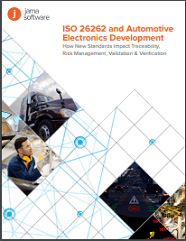Compliance standards, especially those that involve relatively new functional safety elements, will likely add additional requirements to the development process. But ISO 26262, in particular, will add more than new requirements to the product life cycle for automotive hardware-software systems. This Functional Safety standard will act as a framework impacting integrated requirements traceability, risk management, validation, verification, documentation and collaboration […]
Read more ›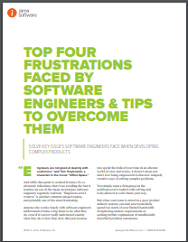
Top Four Frustrations Faced by Software Engineers & Tips to Overcome Them
In today’s increasingly complex product delivery workflows, smoothly handing-off work from one lifecycle stage to the next requires clear cross-team communication. But too often, siloed teams and inefficient communication bottlenecks and stalls your productivity. You need complete visibility into the requirements document, each phase of the product roadmap and the related activities of all delivery team members.
Read more ›
DO-254 Benefits Versus Costs for Engineers & Managers
As a design assurance guideline for airborne electronic hardware, DO-254 is considered by many to be a simple duplicate of DO-178, its avionics software sibling. While similarities abound, so do their many differences. And truly, DO-254 is the benefactor, or bane, of avionics projects the world over. But is DO-254 unduly expensive? Does it add value? Will it improve safety […]
Read more ›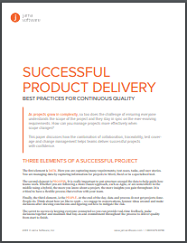
Successful Product Delivery: Best Practices for Continuous Quality
As projects grow in complexity, so does the challenge of ensuring that everyone at each touch-point understands the scope and stay in sync with the ever-evolving requirements. How can you manage projects more effectively when scope changes? This paper discusses how the combination of collaboration, traceability, test coverage and change management can all help teams deliver successful projects on time […]
Read more ›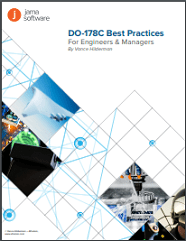
DO-178C Best Practices for Engineers & Managers
Practice of any kind usually involves a modicum of coaching, self-help and repetition. In avionics development, however, there is little time or space for practice, because everything counts. And the results have little margin for error when schedules, budgets and particularly safety are all on the line. How then can “practice” be reconciled with “avionics development”? The best answer is […]
Read more ›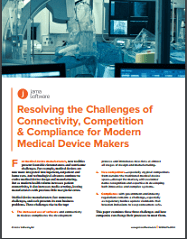
Resolving the Challenges of Connectivity, Competition & Compliance for Modern Medical Device Makers
For medical device manufacturers, new realities present favorable circumstances and worrisome challenges. For example, medical devices are now more integrated into inpatient, outpatient and home care. And technological advances continue to evolve medical device design and manufacturing. But as modern health reform increases patient connectivity, it also increases media scrutiny, leaving manufacturers with precious little margin for error.
Read more ›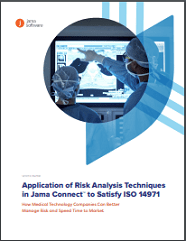
Application of Risk Analysis Techniques in Jama to Satisfy ISO 14971
Medical technology companies especially those developing medical devices are faced with a wide range of techniques for managing risk. The hardest part is often deciding which specific techniques and data points need to be captured to demonstrate that all angles of risk analysis for the product have been accounted for. Today, many medtech companies are using spreadsheets to capture risk […]
Read more ›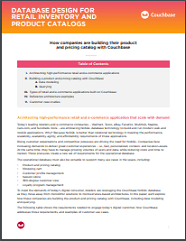
Database Design for Retail Inventory and Product Catalogs
Today’s leading retailers and e-commerce companies – Walmart, Tesco, eBay, Fanatics, StubHub, Staples, Cars.com, and hundreds more – are embracing NoSQL database technology to build and run modern web and mobile applications. Why? Because NoSQL is better than relational technology in meeting the performance, scalability, availability, agility, and affordability requirements of these applications. Rising customer expectations and competitive pressures are […]
Read more ›

